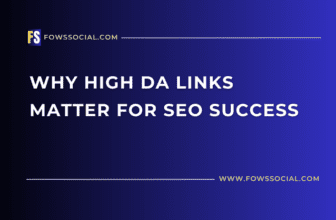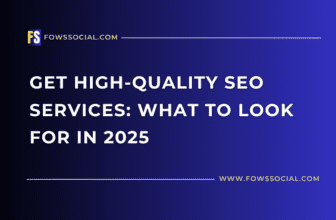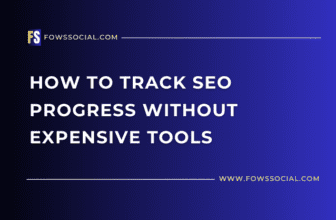What Is the Difference Between On-Page and Off-Page SEO?
Search Engine Optimization (SEO) is vital for businesses aiming to build a prominent online presence and increase organic traffic to their website. On-page SEO and off-page SEO are the two main components of SEO, each playing a crucial role in improving search engine rankings with distinct focuses and strategies.
Improving website visibility with on-page optimization
On-page SEO is the process of enhancing individual web pages to boost their rankings on search engines and attract targeted visitors. This optimization strategy involves improving elements like content, meta tags, headings, images, and URLs to make them more favorable to search engines. The primary objective of on-page SEO is to create a website that is both easily navigable and comprehensible to search engine crawlers, as well as user-friendly for site visitors.
1. Optimization of Content
One key element of on-page SEO is optimizing content. This means producing top-notch, pertinent, and valuable content tailored to specific keywords. Content optimization encompasses strategic keyword usage, crafting engaging and informative articles, and structuring content for easy consumption.
2. Enhancing Meta Tags
Meta tags in HTML are used to give search engines information about a web page, with the title tag and meta description being the most crucial for on-page SEO. The title tag provides a brief description that shows up in search results, while the meta description gives a more detailed summary of the page’s content. By optimizing these meta tags with relevant keywords, a page’s search engine rankings can be enhanced.
3. URL Optimization with proper formatting.
Optimizing URLs involves creating concise, user-friendly links with relevant keywords. A well-organized URL can help search engines comprehend a page’s content and enhance its ranking. It is crucial to maintain URLs that are brief, descriptive, and easily readable to enhance both user experience and SEO.
4. Improving Heading Tags
Heading tags, such as H1, H2, H3, etc., are essential for organizing content on a website and providing valuable information for search engines. By optimizing heading tags using appropriate keywords, it is possible to enhance a page’s search engine rankings and improve user navigation.
Image optimization is the process of enhancing visuals on a website by using descriptive file names, alt text, and captions. This practice can boost a page’s search engine rankings and enhance its appeal to visitors. Incorporating relevant keywords in image alt text can also enhance accessibility and SEO.
Off-Page Search Engine Optimization
Off-page SEO involves strategies implemented outside of a website to boost its search engine rankings. These tactics may include creating backlinks, engaging in social media marketing, and other promotional activities that enhance a website’s authority, trustworthiness, and presence. Off-page SEO plays a crucial role in enhancing a website’s domain authority and attracting a larger amount of organic traffic.
Link building is a critical component of off-page SEO, as it involves obtaining backlinks from other websites to enhance a website’s authority and credibility. Backlinks serve as endorsements from other websites, signifying trust and relevance to search engines. It is important to note that not all backlinks carry the same weight; high-quality backlinks from reputable websites hold more value compared to low-quality backlinks from spammy sites.
2. Social Media Advertising
Engaging content shared on social media platforms such as Facebook, Twitter, and LinkedIn is vital for off-page SEO. By utilizing social media marketing strategies, businesses can drive more traffic to their website and enhance their search engine rankings. Search engines also take social media signals into account when ranking web pages, making a strong social media presence essential for improving a website’s visibility and credibility.
Guest Blogging – point number three
Guest blogging is the practice of creating and sharing content on external websites to enhance a website’s credibility and gain inbound links. Businesses can expand their reach, drive more website traffic, and boost their search engine rankings by providing valuable content to industry-specific websites. This strategy helps build thought leadership, raise brand visibility, and enhance SEO performance.
4. Reviews on the Internet
Online reviews play a crucial role in off-page SEO. Favorable feedback on well-known review platforms such as Google My Business, Yelp, and TripAdvisor can enhance a company’s reputation, trustworthiness, and search engine rankings. By urging pleased patrons to share their positive experiences, businesses can increase their customer base and enhance their online presence.
5. Search Engine Optimization for Local Businesses
Local SEO is a form of off-page SEO that specifically targets optimizing a website for local search results. This involves creating a Google My Business profile, optimizing local citations, and ensuring inclusion in local directories. Prioritizing local SEO allows businesses to reach customers in their vicinity, drive more foot traffic to their brick-and-mortar store, and enhance their position in search engine rankings.
The conclusion is…
In summary, both on-page and off-page SEO are vital aspects of an effective SEO strategy. On-page SEO concentrates on optimizing specific web pages to enhance search engine rankings and attract targeted traffic, while off-page SEO involves activities like building backlinks and engaging in social media marketing to boost a website’s credibility and visibility. By incorporating both on-page and off-page strategies, businesses can enhance their online visibility, attract organic traffic, and improve their search engine rankings.








